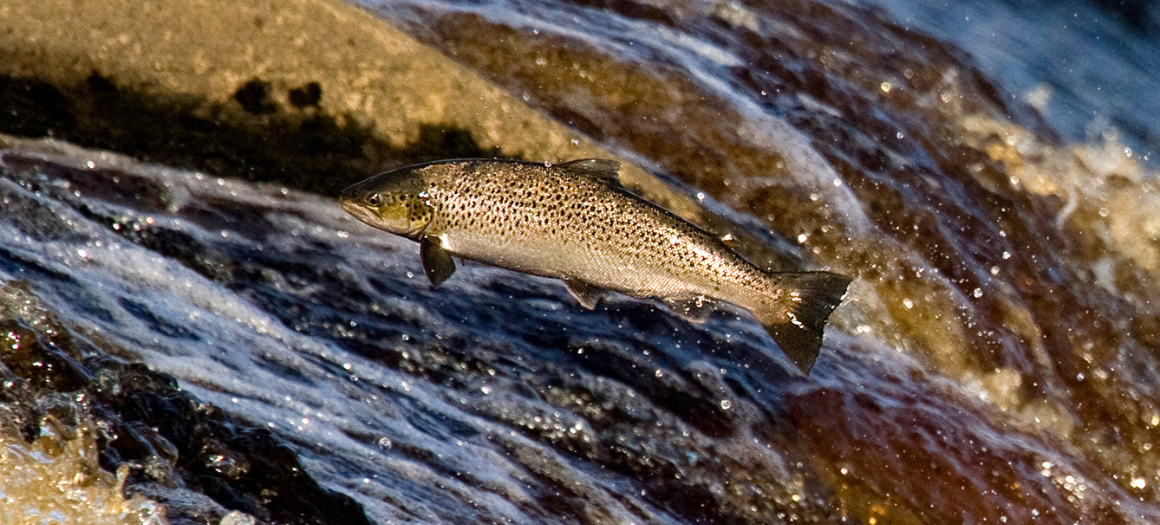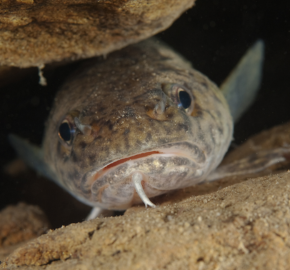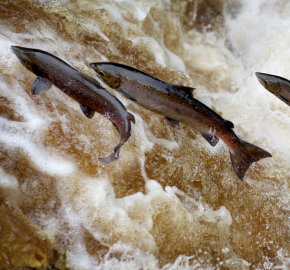Sea Trout: what we know and the challenges to conservation

In early September, the Institute of Fisheries Management (IFM) working in partnership with the Wild Trout Trust and WildFish held the third Sea Trout Symposium in Cardiff.
The symposium was held to discuss and advance our knowledge about the biology, genetics, and behaviour of sea trout. Academics, anglers, conservationists and students alike gathered to discuss their research, experiences and opinions on the current state of sea trout in Britain and Ireland.
The research and evidence presented is an essential part of the plan to develop and communicate recommendations for the management urgently needed to restore and protect sea trout stocks in England, Wales, Scotland and Ireland.
What we know about the crisis facing sea trout
Sea trout are an anadromous fish, meaning that they are an important proxy for the wider environmental health of our rivers, lakes, estuaries and coastal waters.
Over the past 100 years, we have seen a continued decline in our aquatic environments as they battle pollution, climate warming, water extractions and overfishing. It is no surprise that sea trout populations are coming under increasing pressure.
The IFM’s closing statements to the symposium aptly summarise the current situation:
“The evidence is clear: over the last decade, sea trout numbers have plummeted in rivers throughout England, Wales, Scotland, and Ireland. Barriers to migration, poor water quality, predation, marine exploitation, and climate change were identified as the main causes.”
Challenges to sea trout conservation
It was clear from the symposium that our understanding of sea trout is better now than it ever has been, and the findings presented showcased the expertise and passion within the fisheries community. BUT protecting this iconic species will require a louder, greater share of voice that extends beyond the immediate community.
Sea trout are not at the fore of the public consciousness when it comes to protecting wildlife. This was evident in the lack of diversity at the symposium. One of the most interesting and pressing issues highlighted was how to effectively engage the wider public.
The current sewage crisis in the UK is a good example of a freshwater conservation issue that has harnessed strong public support which gives the subject a louder voice in government and industry.
If sea trout remains freshwater’s best-kept secret, the potential for scientific research to lead to action is greatly diminished.
Attendees agreed that we must stop viewing trout, or even salmonids in isolation and, instead consider them wholistically, as part of the wider environmental picture. Viewing trout as a vital part of our aquatic ecosystems will be far more effective than trying to campaign for their protection individually.
A healthy trout population means a healthy river, lake or coastal area. They are indicators of clean, biodiverse waters, which are used increasingly by local communities from wild swimmers to surfers.
It is imperative that we capitalise on this heightened public consciousness surrounding water issues and look to introduce the plight of the sea trout into the current discourse. If not, despite our expanding knowledge of the importance and fragility of trout populations, it will be difficult to deliver meaningful change.
The key conference findings
One of the key takeaways from the symposium is how greatly our understanding of sea trout has grown since the community was first established in 1984. We now have a far greater understanding of trout biology, behaviour and how they are adapting to our changing environment from continuing academic study and in situ monitoring.
Professor Steve Ormerod, of Cardiff University, highlighted the role of trout as environmental engineers, and how they can have knock-on effects on the wider ecosystem. Trout redds can provide a key habitat for lampreys, whilst pearl muscles exhibit a higher chance of survival when trout migrate out to sea, rather than remaining sedentary in freshwater ecosystems. In fact, nutrient availability signals can also be identified in birds from areas which experience salmonid migration and mortality events after spawning, highlighting their key and complex role in food webs, not just as predators but also as prey throughout their lifecycle, from spawning, migration and eventually death.
Advancements in genetic testing have also shed new light on the diversity of trout within the species. As sea trout are genetically the same as sedentary freshwater brown trout, it has been difficult to separate the two from a conservation status, despite vastly different behaviours and roles in the ecosystem.
Research by Professors Jamie Stevens and Andy King, of Exeter University, as part of the SAMARCH project, has been researching long-distance marine migrations by trout around the English Channel. Trout can now be genetically identified from the genotypes which are unique from the rivers they have spawned in. This has allowed us to track migrations of sea trout and has shown that they travel far greater distances than previously thought. Migrations of over 800km were documented in the study, highlighting how trout can be at risk of fishing exploitation far away from their home rivers. Therefore, we need to stop thinking about trout solely the river and move more to regional-level management. Projects such as marine protected areas are now more important as we can see that sea trout migrate hundreds of KM and thus, protected areas need to be vastly expanded.
Next steps
In November, the organisations involved in sea trout management will meet to agree on a set of actions for the conservation and restoration of these threatened fish.
The outcomes of this meeting will potentially shape the future of sea trout conservation at a time when the current climate and the pollution crisis increasingly challenge the species. The biggest challenge will be to ensure a mechanism is found that translates academic research into meaningful action.
One thing is clear. If nothing is done, we will continue to see the dramatic decline of sea trout populations, and risk losing them from some of our rivers and coasts forever.





Two excellent briefings by Daniel Nixon. So important for our River, the Ems which is on its last legs and will lose its few remaining trout imminently. It has a long history of ‘sea going fish’ which is on the point of being lost through failure to apply existing regulations, guidance and environmental management.
As a consumer it has become apparent in recent years that salmon are not generally sustainable – farmed salmon have serious environmental impacts and wild salmon have been over exploited by large marine fishing operations.
Consumers have been steered toward trout as a more sustainable alternative with less environmental impact and providing a healthier food source than salmon.
Information from retailers, (supermarkets) is insufficient in terms of accuracy and completeness to determine if this is correct.
Would it be possible to include production and retail organisations in these discussions in order to educate them and their customers as to the true state of affairs?